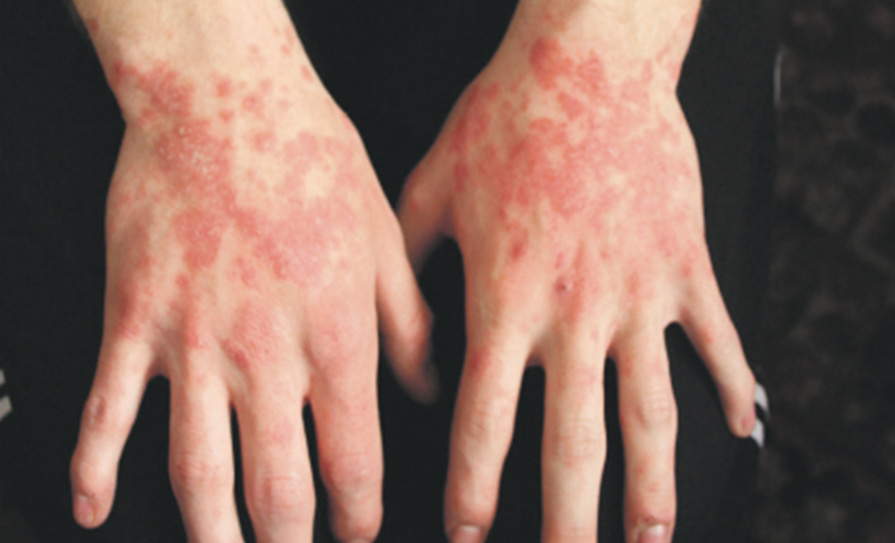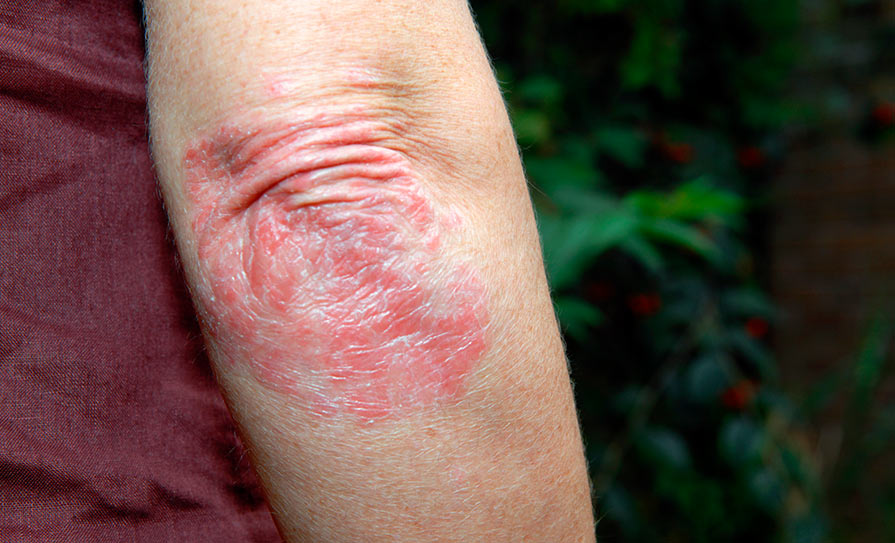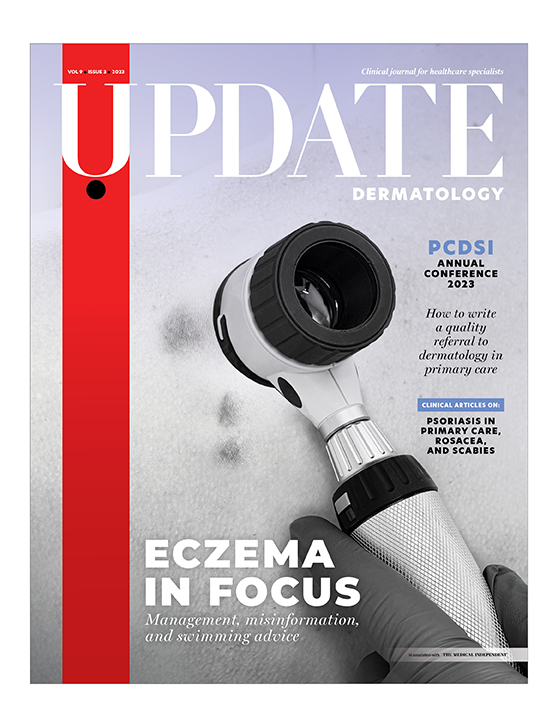Attendees at UCD’s Charles Institute Seminar Series heard a presentation by Prof Emma Teeling on how the unique
physiology of bats is being investigated to potentially help humans to live longer and healthier
The Charles Institute, Ireland’s national dermatology research and education centre, hosts a range of guest speakers who cover a variety of topics ranging from skin cancer to psoriasis, among others. The series, which is sponsored by RELIFE (part of the A.Menarini group), is designed to provide expert advice from a range of distinguished national and international experts in their respective fields and is chaired by Prof Desmond Tobin, Full Professor of Dermatological Science at UCD School of Medicine and Director of the Charles Institute of Dermatology.
The seminars are broadcast to attendees with a special interest in dermatology and cutaneous science in other locations, who access the talks remotely via an audio-visual link. Attendees heard a presentation from Prof Emma Teeling, an international expert in the cross-cutting fields of comparative genomics and mammalian phylogenetics. Prof Teeling has a special interest in bat biology and is founder of the UCD Laboratory of Molecular Evolution and Mammalian Phylogenics, as well as Founding Director of the genome consortium Bat1K and Head of Zoology at UCD. Much of the focus of Prof Teeling’s integrative research work with her colleagues is on mammalian adaptations, particularly extended life span and viral tolerance.
Describing bats as “the most fascinating of all the mammals,” Prof Teeling told the seminar that bats have gotten a “bad press”, particularly as some have suggested a potential link between bats and Covid-19. She also outlined bats’ anti-ageing mechanism and unique immunity and explained that studying bats can help to promote healthy ageing in humans and protect against infectious diseases in the context of the worldwide ageing population.
Immune system
One-in-five living mammals on earth are bats and there are more than 1,400 species, Prof Teeling explained. “Bats seem to be able to tolerate many pathogens and viruses that are typically lethal to other mammals,” she said. “They have a unique immune system that allows them to live with [a wide range of] pathogens, rather than die from them.” Much of Prof Teeling’s research is focused on the Myotis myotis, or the greater-mouse-eared bat , which is one of the longest-living bat species. “I wanted to study bats in a different way and create an alternative model system that would allow us to uncover the molecular pathways that underlie extraordinary ageing and disease tolerance in mammals,” she said.

In common with naked mole rats, bats’ extended longevity provides an advantage over other laboratory models and “bucks the trend” of the smallest mammals having shorter life spans than their larger counterparts, she added.
Among other aspects, Prof Teeling and her colleagues looked at the gene expression profile of different tissues in bats compared to other mammals. “There was a differential expression of genes involved in DNA repair mechanisms in bats when compared with other mammals,” she told the seminar.
“There was no relationship between telomere length and age in the longest-lived bats [Myotis species] and this is not as a result of telomerase expression, because we could not find any such expression. Also, genomic and transcriptomic analyses implicated an enhanced DNA repair in the evolution of exceptional longevity in Myotis bats. Potentially, there is alternative telomere lengthening as a maintenance mechanism and we are taking that [hypothesis] into the laboratory right now to try to validate it.”
Prof Teeling also looked at the damage that was induced in bats due to oxidative stress. “We found absolutely no evidence of a higher level of oxidative damage in bats as they age, despite their high metabolic rate and high production of free radicals. This means that bats have potentially evolved a mechanism to repair or remove this damage,” she postulated.
In addition, between young, middle-aged and older bats, there was no change in their microbiome and they are able to tolerate highly pathogenic bacteria, exhibiting a form of homeostasis as they age. Prof Teeling and her team sequenced the entire blood transcriptome to see which genes are up- or down-regulated. “What we found was extraordinary,” she told the attendees. “Bats actually increase the maintenance of their DNA as they age. Mice do not do this… mice show a huge increase in their inflammatory transcripts as they age, which is not seen in bats.”
“We found that bats show a similar expression with age of genes that are already known to extend the life span of model organisms,” she continued. “If you want to extend the life span of lab mice, you knock-in a second copy of PTEN, but bats have naturally such a gene expression profile. This means that we can uncover the mechanisms that bats have evolved in order to slow-down ageing. We found 23 genes that showed a completely different expression with age in bats compared to other mammals, and these genes are typically not implicated with ageing pathways directly — these are the targets that we need to work on. However, we also found a number of microRNAs which bats have, where we do have homologues in humans, that can potentially regulate these anti-longevity mechanisms, and these need to be our targets moving forward.”
Prof Teeling provided a brief overview of a range of other research she and her colleagues conducted in an effort to uncover the mysteries of bats’ extraordinary longevity and pathogen resistance, one of which was qPCR assessment for inflammatory and anti-inflammatory cytokines.
“At the beginning of a simulated infection, there is a very aggressive antiviral response, but they dampen that very quickly with an equally aggressive anti-inflammatory response,” she told the seminar.
“It has been argued that when patients go into hospital, they test the inflammatory-to-anti-inflammatory cytokine signature in an individual and if they have a higher ratio of anti-inflammatory to inflammatory cytokines, they typically have a better outcome. So, bats seem to have evolved a unique immune response that allows them to tolerate pathogens.
This could explain why they can be reservoirs for so many zoonotic diseases — when you look at their immune response, their antiviral mechanisms are switched on all of the time and potentially, this is a selective factor that causes the viruses to be compelled to evolve and make them much better at jumping between species.” Prof Teeling also that bats are missing the entire family of genes that make inflammasomes, combined with an expansion of the APOBEC antiviral gene family, compared to other mammals.
Sterile inflammation
In terms of why bats have these unique antiviral and longevity mechanisms, she hypothesised : “The theory is that flight is very costly metabolically. Bats are constantly suffering from sterile inflammation. This has necessitated an adaptation of their immune system to help them dampen that constant sterile inflammation and evolve mechanisms to deal with it. This has resulted in unexpected longevity, because inflammation drives ageing, as well as diseases like cancer… this means that there is also a unique tolerance to pathogens — they potentially deal with pathogens in the same way that they deal with the constant sterile inflammation, so they have had to evolve anti-inflammatory mechanisms, as well as DNA repair mechanisms.”
Prof Teeling summarised: “Studying bats in the way we do allows us to uncover the basis of how mammals can age more healthily. Also, we are now trying to uncover how we can live with infectious diseases by looking at how bats have evolved to allow them to switch on antiviral mechanisms and then switch them off just in time to prevent them becoming ill due to different pathogens. This is something we can learn from — it’s not a vaccine, but could be a way to treat people who are sick due to infectious diseases.”
Fecundity
During a Q&A session that saw a great deal of interest and clinical curiosity among the attendees, Prof Tobin noted that there are many areas of interest in Prof Teeling’s work that would appeal to researchers in other specialties of mammalian biology and asked: “Over 40 years, for example, would you see [in bats] the typical mammalian changes, such as reduced fecundity, or menopause — do you see any other changes in some organs in terms of their proclivity to show that the first signs of ageing, e.g., in the heart, for instance, where one may expect that it would be one of the first organs to become ‘worn out’. So, do they exhibit any of those other similar features [of ageing], such as sex steroid changes or different organs failing at different rates?”
Prof Teeling responded: “We don’t have access to that physiological data yet… typically, in the long term studies, the bats are not killed as they are protected species. We are now starting to work more with zoos — fruit bats do very well in zoos, because they eat fruit and they mate, hence we are able to feed them readily and the population can gorw,” she continued. “We are now working with Copenhagen Zoo, whereby we may be able to access to data like that. While we don’t have the physiological data, the ecological data shows that they exhibit no reduction in their fecundity and there is no menopause,” said Prof Teeling.
“The longest-lived females keep having babies into their oldest ages…
“When you catch them, it’s very difficult to age them because there are no obvious outward signs of their age; a two-year-old can have broken teeth if they have eaten the wrong thing, for example. However, with collaborators have done a methylation study. There is potentially a methylation clock [in the bats], so we may be able to age bats that way but when you look at the overall epigenomic changes, you find that in the longest-living bats, their ‘clock’ ticks at a much slower rate, so this is something that we are also working on. But those questions are really important and we need to think now about how we can address them.”
RELIFE has had no input into the content of this article or series of seminars













Leave a Reply
You must be logged in to post a comment.